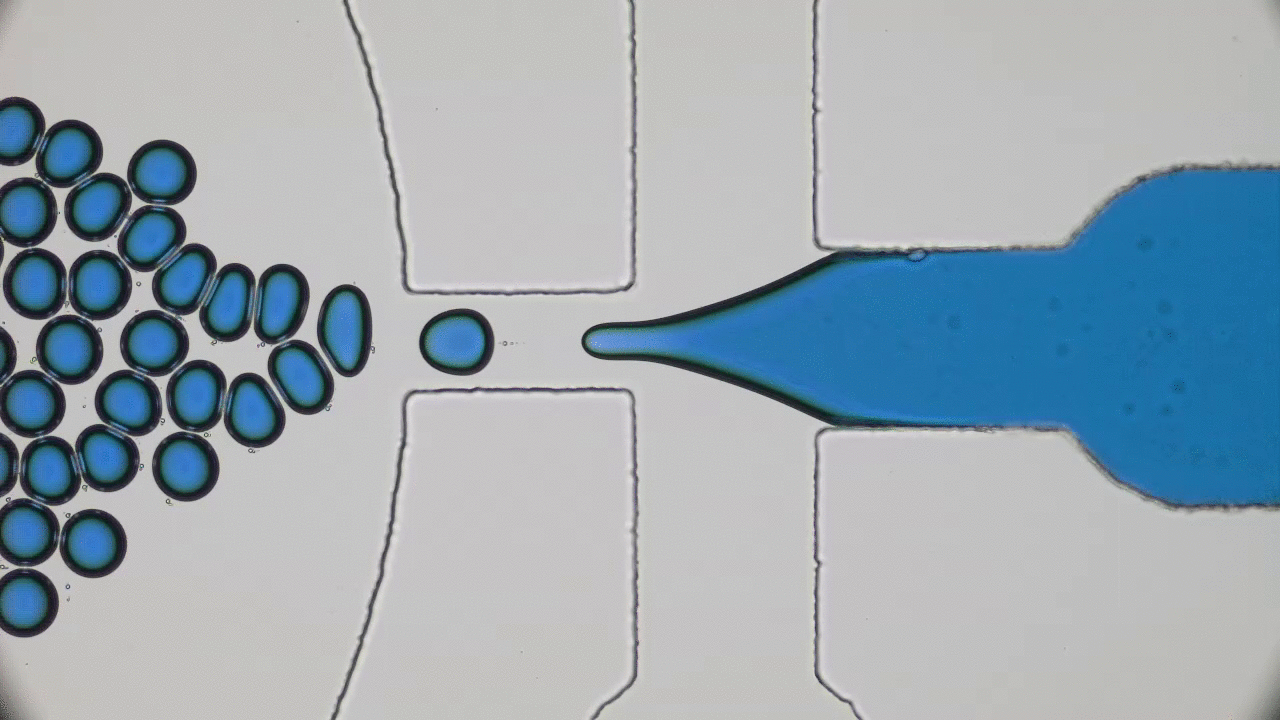Quintessential soft matter problems, such as the behavior of droplets in ink-jet printing, involve complex interactions between forces and materials. In today’s article, Prof. Wilson Poon points out that coronaviruses are also quintessential soft matter objects, and highlights a range of areas where soft matter science may help better understand, and combat viral pandemics.
Self-assembling silk lasers
When I first learned about the coffee ring effect I thought it was super cool, but it seemed like an open-and-shut case. Why do rings form where some liquids, like spilled coffee, are left to dry? Roughness on the table causes the liquid to spread imperfectly across the surface, pinning the edges of the droplet in place with a fixed diameter. Because the diameter of the droplet can’t change during evaporation, new liquid must flow from the droplet’s center to the edges. This flow also pushes dissolved coffee particles to the edges of the droplet, where they are left behind to form a ring as the water evaporates away (Figure 1). More details can be found in our previous post, here. It’s a complicated phenomenon, but after being described in 1997 it doesn’t seem like anything new would be going on here. Right? Well, as it usually happens in science, classic concepts have a way of popping back up in unexpected ways. Last year It?r Bak?? Do?ru and her colleagues in Prof. Nizamo?lu’s group at Koç University, Turkey published a study using the often troublesome coffee ring effect to their advantage: making self-assembling silk lasers.
When espresso evaporates: the physics of coffee rings
I’ve spilled a lot of coffee over the years. Usually not a whole cup, just a drop or two while pouring. And when it’s just a drop, it’s easy to justify waiting to clean it up. When the drop dries on the table, it forms a stain with a ring (Figure 1), giving it the look of a deliberately outlined splotch of brown in a contemporary art piece (In this context, the phrase “coffee ring” refers to this small-scale, spontaneously formed circular stain rather than the imprint left on a table from the bottom of a wet coffee cup). But the appearance of these stains is simply a result of the physics happening inside the drop. Coffee is made of tiny granules of ground up coffee beans suspended in water, so the ring must mean that these granules migrate to the edge of the droplet when it dries. Why do the granules travel as they dry? Today’s paper by Robert D. Deegan, Olgica Bakajin, Todd F. Dupont, Greb Huber, Sidney R. Nagel and Thomas A. Witten provides evidence that coffee rings arise due to capillary flow– the flow of liquid due to intermolecular forces within the liquid and between the liquid and its surrounding surfaces.




